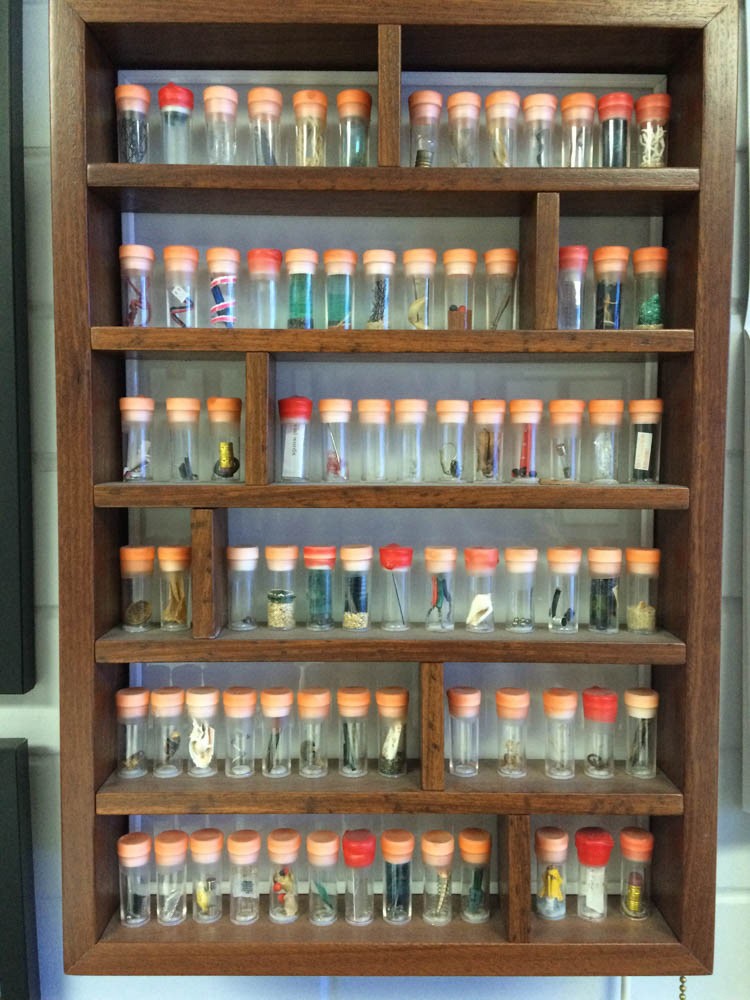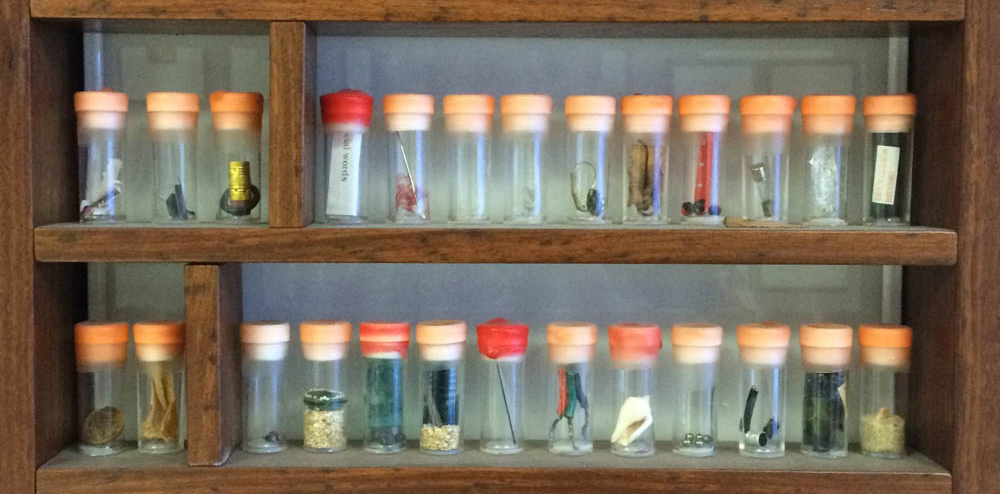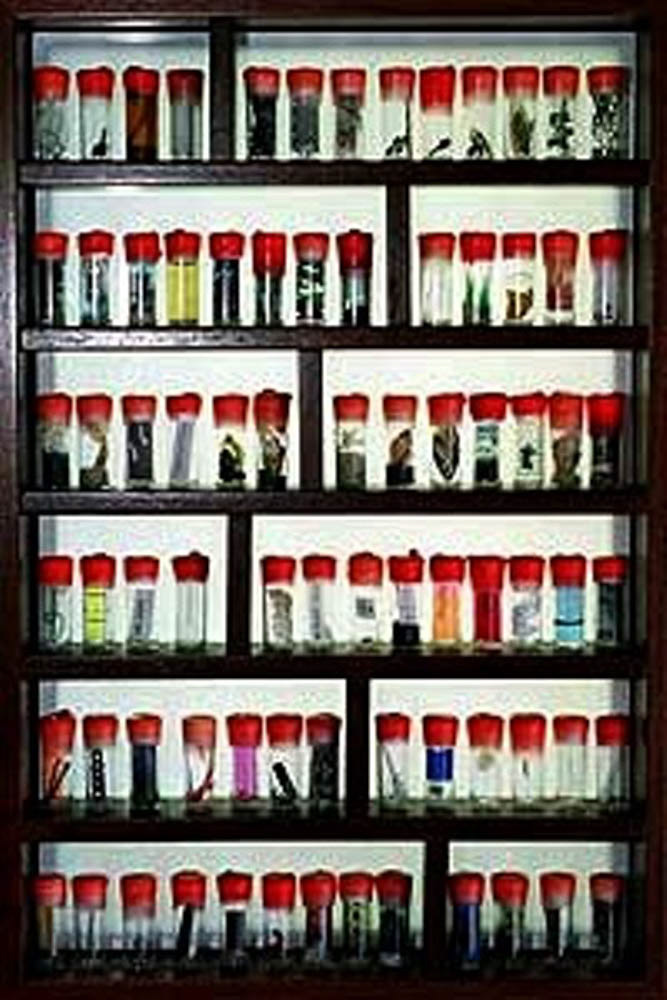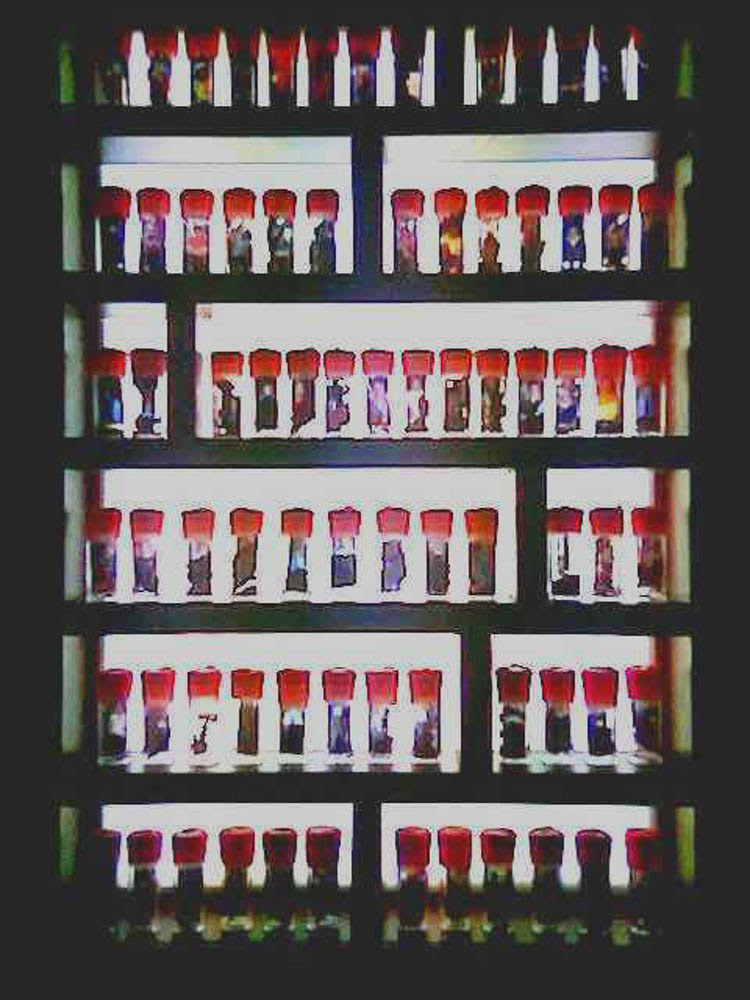2002 - 2007
Unique boxes containing (in)organic materials.
á-poth’é-çã-ry,
1. (M.E. apothecarie; L. apotheca a repository, from Gr. apothéké, a place where a thing is stored up; apo, away and tithenai, to put.)
In England and Ireland the term was formerly applied to a practitioner who was licensed to sell drugs and medicines: a druggist or pharmacist.
1. (M.E. apothecarie; L. apotheca a repository, from Gr. apothéké, a place where a thing is stored up; apo, away and tithenai, to put.)
In England and Ireland the term was formerly applied to a practitioner who was licensed to sell drugs and medicines: a druggist or pharmacist.
The Apothecaries are yet another considered response to photography – "canned chance" as Marcel Duchamp referred to his boxed stoppages. By placing seemingly random objects in phials and sealing them I have then created a taxonomy for them, forming each piece individually into stanzas of poetry. Individually the phials serve to illustrate an 'impression' rather than to describe the specific object/situation per sé. They remind me of how we order our own memories and thoughts.
I have presented the objects in the 'Apothecaries' as an allusion to a distillation of a life’s observations and arranged them in a display much like a vitrine. In Edwardian times these were popularly used to display trophies of one’s knowledge and experiences.
They allude to intimate/personal detritus and the beginnings of a specific gaze. Minute worlds are sealed and presented to you in a pseudo-scientific artifice for your intense scrutiny, in much the same way as much as we expect relics or other religious artifacts to be seen; within the context of specific evidence of their actual existence. But again like photographs, they describe precisely as a souvenir without telling us what actually happened.



